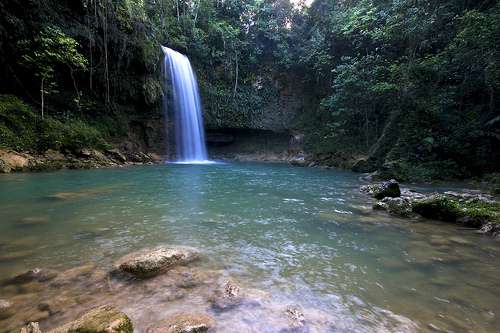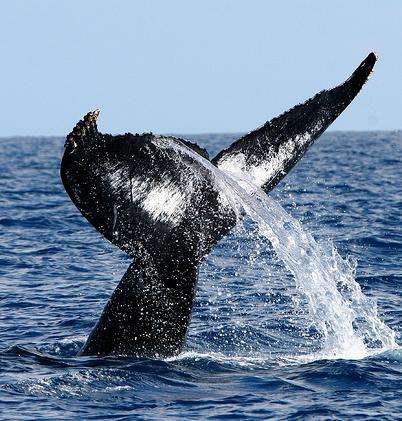Punta Cana, Dominican Republic Guide
Know Before You Go...®
Why Punta Cana, Dominican Republic?
- Punta Cana is home to the world's second-largest coral reef.
- The climate in Punta Cana is tropical with temperatures year-round in the 70s and 80s.
- The beaches in Punta Cana are some of the most beautiful in the world, with white sand and crystal clear waters.
- Punta Cana is a major tourist destination in the Caribbean with over 5 million visitors every year.
- Punta Cana is home to a variety of resorts, restaurants, shopping centers, and natural attractions.
Punta Cana, Dominican Republic Weather/Climate
Average Temperatures
| January |
84° F
|
| February |
84° F
|
| March |
84° F
|
| April |
84° F
|
| May |
86° F
|
| June |
91° F
|
| July |
88° F
|
| August |
88° F
|
| September |
88° F
|
| October |
88° F
|
| November |
86° F
|
| December |
84° F
|
Average Rainfall
| January |
2.4 inches
|
| February |
1.4 inches
|
| March |
1.9 inches
|
| April |
3.9 inches
|
| May |
6.8 inches
|
| June |
6.1 inches
|
| July |
6.4 inches
|
| August |
6.3 inches
|
| September |
7.3 inches
|
| October |
6 inches
|
| November |
4.8 inches
|
| December |
2.4 inches
|
Dominican Republic is the kiteboarding capital of the world.
Dominican Republic's north coast offers the perfect mix of water, waves and wind making this the kiteboarding capital of the world. Using a board and the power of a large controllable kite, the surfer relies on wind and heavy gusts to propel him over the water and waves. This is one of the fastest growing water sports. If you're a beginner, you won't have any trouble finding experienced kitesurfers offering instruction. Die-hard kitesurfers from around the world meet annually at Cabarete Beach to compete in the World Cup Windsurfing Championship, the largest kitesurfing event in the world.
Whale-Watching -- Get your camera ready!
The Dominican Republic is one of the best places in the world to whale-watch. Thousands of humpbacks migrate here during mating season, which runs mid-January through mid-March. Catch a boat to Samana Bay and you may see as many as 300 whales frolicking just a few yards away. Whales race underwater, then launch into the air, and crash back into the water. It's a site you'll never forget. Cheering for more you may also see whales roll onto their backs and sides raising their tail and flippers high into the air and then slapping down on the water. Bring your camera. It's fun for the whole family!

Exploring D.R's Many Waterfalls
Hike through Dominican Republic's lush, tropical jungles to one of its many waterfall oasis. Swim in the crystal-clear lagoon pools and bathe in the cascading water falling overhead. The highest waterfall in the Caribbean is the Salto Aqua Blanca at 492 feet. Tours and hikes to this stunning site are offered in the city of Constanza. The Salto de Jimenoa, located in Jarabacoa National Park, is 131-foot. To get there you'll take a hiking trail through the jungle and over a narrow suspension bridge. There is a snack bar that's open on the weekends. El Limon is picturesque waterfall accessible only by horseback. Rides are around $15 and take 2 ½ hours round-trip. Bring a little extra cash for lunch. Near Puerto Plata, Damajagua Falls, also known as Cascades of Imbert and Seven Fallas, is a series of 27 waterfalls. Visitors climb up limestone boulders then jump or slide into the grottoes. The water can be swift so this excursion isn't for weak or young swimmers and water shoes are recommended.
Transportation on Punta Cana, Dominican Republic
Getting to Punta Cana, Dominican Republic and getting around. Our transportation tips will
help make your trip smoother. More good sand advice.
Entry Documents
- Passport: Valid for the duration of your stay.
- Visa: Not required for most nationalities (including UK and most EU citizens) for stays of up to 30 days.
- Return or Onward Ticket: Proof of departure from the Dominican Republic may be required.
- Travel Authorization: Most visitors do not need pre-arrival authorization, but health declarations may be required depending on current travel regulations.
Departure Tax
A departure tax of approximately US$20 is typically charged at the airport for international departures.
Driving
- License: Visitors can drive with a valid foreign driver’s license for up to 90 days.
- Permit: A temporary driving permit is required, obtainable at the airport or local police stations.
- Driving Side: Right-hand side of the road.
- Road Conditions: Generally good in urban areas, with paved roads. Rural areas may have less-maintained roads.
- Speed Limits: Typically 30-40 mph (48-64 km/h) in urban areas and up to 60 mph (96 km/h) on highways.
- Traffic Rules: Be mindful of all traffic signals, pedestrians, and local driving customs. Watch for pedestrians and motorcycles in more crowded areas.
Know Before You Go...® - Punta Cana, Dominican Republic Travel Tips
Before making their way to Punta Cana, Dominican Republic , vacationers like
to know a little bit of helpful information to make them feel more at home during their stay. Take a
look at our travel tips to make your time in villas
in Punta Cana, Dominican Republic even more relaxing.
| Capital: |
Dominican Republic |
| Population: |
2021Unknown |
| Size: |
1Approximately 1,450 square miles. |
| Electric Current: |
110 |
| Official Language: |
The official language spoken in Punta Cana is Spanish, which is the primary language used in government, education, and business. However, due to its popularity as a tourist destination, English is also widely spoken, especially in hotels, restaurants, an |
| Currency: |
Punta Cana, located in the Dominican Republic, is a popular tourist destination known for its beautiful beaches, all-inclusive resorts, and a variety of activities for visitors. When it comes to currency and payment options in Punta Cana, here is what you need to know:
1. The official currency in the Dominican Republic is the Dominican Peso (DOP). However, US dollars are widely accepted in most tourist areas, and many businesses also accept Euros and Canadian dollars.
2. It is recommended to exchange your currency to Dominican Pesos before your trip. This can be done at banks, exchange offices, or at the airport. It is important to note that the exchange rates may vary, so it is best to compare rates before exchanging your money.
3. Most major credit cards, such as Visa, Mastercard, and American Express, are accepted in Punta Cana. However, it is always a good idea to inform your bank of your travel plans to avoid any issues with your card.
4. ATMs are widely available in P |
| Tipping and Taxes: |
Tipping and taxes in Punta Cana are an important aspect of the local culture and economy. Here is a summary of what visitors should know about tipping and taxes in this popular tourist destination in the Dominican Republic.
Tipping:
Tipping is not mandatory in Punta Cana, but it is widely expected and appreciated by service industry workers. The recommended amount for tipping varies depending on the type of service, but a general guideline is 10-15% of the total bill. Many restaurants and hotels in Punta Cana will automatically add a service charge to the bill, which is typically around 10%. However, it is still customary to leave an additional tip for exceptional service. It is also common to tip tour guides, drivers, and housekeeping staff, but the amount is at the discretion of the visitor.
Taxes:
The Dominican Republic has a value-added tax (VAT) of 18% on most goods and services, including hotel stays and restaurant meals. This tax is usually included in the price of goods |
| Dress Code: |
The dress code in Punta Cana is casual, with light and comfortable clothing suitable for warm weather. |
| Topography: |
Punta Cana is a coastal region in the Dominican Republic with a flat terrain, featuring white sandy beaches and crystal clear waters. |
| Telephone: |
Country code: +1
Area code: 809 |
Punta Cana, Dominican Republic Weddings and Honeymoons
In the Dominican Republic, the process of getting married is simple and popular among foreign couples. Couples must apply for a marriage license at the local Civil Registry office. Required documents include:
- Valid passports for both parties.
- Birth certificates for both parties.
- Proof of marital status: If divorced, a final divorce decree; if widowed, a death certificate of the spouse.
- Proof of residence in the Dominican Republic (if applicable).
- Affidavit of no impediment to marriage (a statement affirming both parties are legally eligible to marry).
The marriage license costs approximately DOP 2,000 (about US$35). Additional fees for the officiant range from DOP 3,000 to DOP 15,000 (approximately US$55 to US$275) depending on location and ceremony type. It is recommended to apply for the license at least 3 business days before the intended wedding date.






